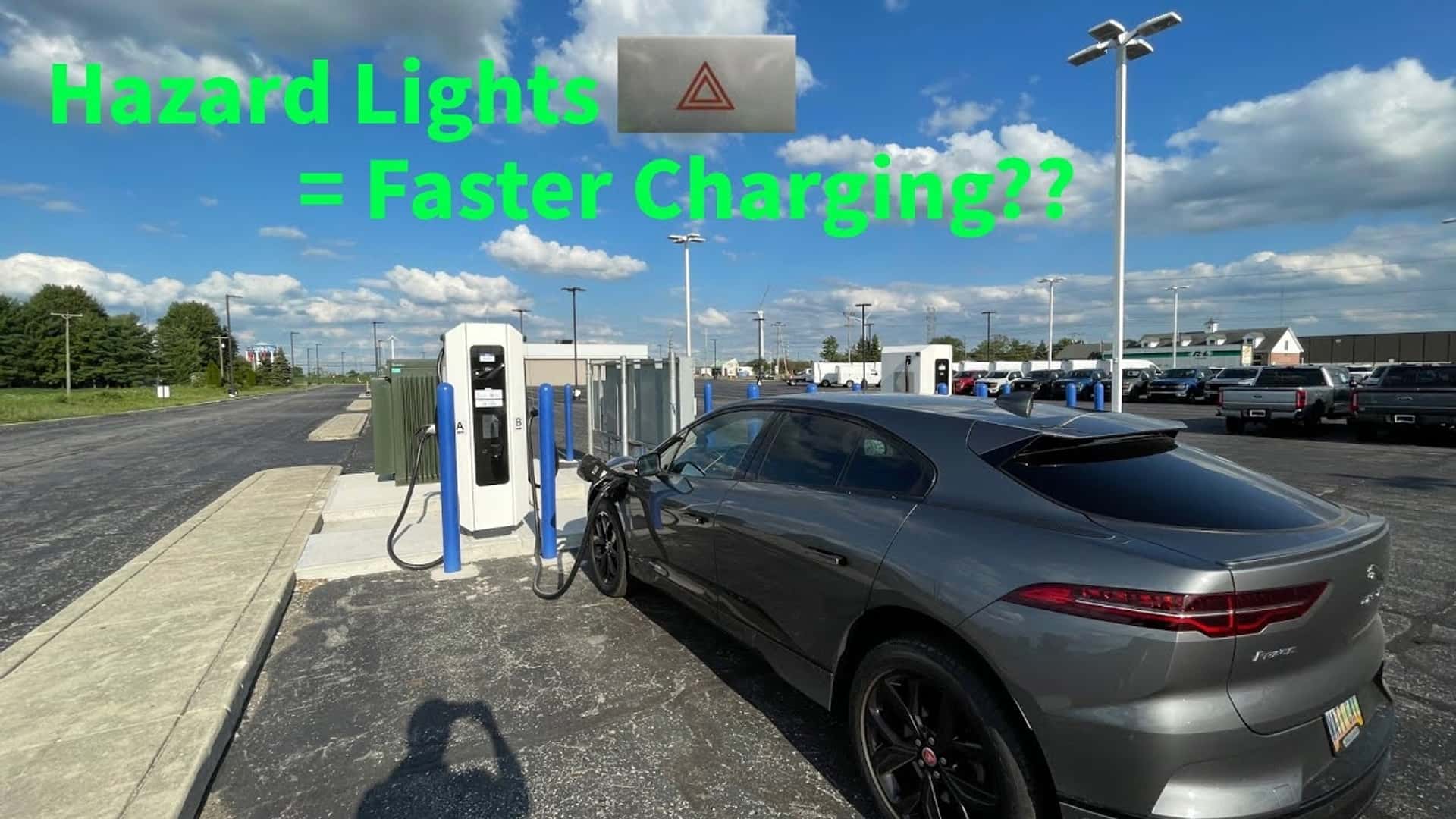
WEIRD: JAGUAR I-PACE CHARGES FASTER IF YOU PUT THE HAZARD LIGHTS ON
It sounds like a weird EV myth, but a new video shows that, for at least some people, it's true.
I thought we had seen it all with the wet towel trick. I couldn't imagine a weirder trick than placing a damp rag on a Supercharger handle to improve charging speeds (which, it should be noted, Tesla really says you should not do.) But thanks to a new video from EverythingEVs, the bar has just been raised.
In a Jaguar I-Pace (RIP), the cheat code to enable faster charging is, apparently, to turn on your hazard lights.
No, we don't know why, either.
With the wet towel trick, it made sense why it worked. The cool water tricked the temperature sensor in the Supercharger handle into thinking it was cooler, allowing the station to provide more power. That makes sense, though it's not safe or recommended. Tesla itself reminds you: Don't do this. Yet at least we understand why it can work, even if it isn't a good idea.
For the hazard-light trick, there was no real reason to expect it to work. Rumors had circulated on forums for years, but it's not clear where they come from. All they said was that if you turn on the hazards before charging starts and leave them on the whole time, you'll get a faster charge. Up until this week there was no clear test of the theory. There wasn't even an explanation for why it might work. It had "silly myth" written all over it. There's only one issue: According to one test, it works.
Related Stories
- Jaguar I-Pace: An EV Pioneer Dies With A Whimper
- 2024 Jaguar I-Pace Review: How Does This Electric O.G. Hold Up Today?
- Jaguar Will End Production Of All Current Models Ahead Of Next Year’s New EVs
- Tesla Owners Are Putting Wet Towels On Supercharger Handles To Get Higher Charging Speeds
- Watch A Chinese EV Charge Faster Than Any American Car
- GM Patents New Way To Do The 'Cool Towel Trick' For Faster Charging
The host of EverythingEVs tried it with his personal 2019 I-Pace. From early on, it was clear something was different. He noted that the car rarely held over 90 kW past 11 or 12%. With the hazards on, though, he's able to pull over 100 kW at 30%. Most of the payoff comes early in the charge cycle, but he notes minor improvements that last throughout the test. The final result: A 10-80% charge time of 42 minutes, 8 minutes faster than his last 10-80% charge test, and faster, he says, than he's ever charged before.
There are reasons to be skeptical of the trick. It's only one video, and charging stations can be inconsistent. Also, the charger ended the session with the car at 93%. It refused to re-initiate the session.
EverythingEVs blamed the charger, but it seems plausible that pulling more power than the car can normally handle contributed to the issue. If charging this way was safe or consistent, I'd imagine Jaguar would have enabled it without a Konami code.
I've reached out to Jaguar about whether this is an intentional design, why it might work and whether it's safe to try elsewhere. I'll update this post when I hear back.
Contact the author: [email protected].
2024-07-26T19:18:18Z dg43tfdfdgfd